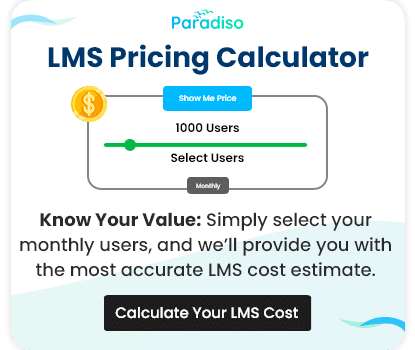Are you looking for ways to enhance your organization’s training and development programs? Have you considered leveraging e-learning to upskill your workforce? In today’s fast-paced and competitive business world, corporate e-learning has emerged as a powerful tool for training and development of employees. As organizations increasingly embrace remote work and digital transformation, e-learning is becoming an indispensable part of their learning and development strategy. However, designing and implementing effective e-learning programs can be challenging without proper planning and execution. That’s why in this blog, we will discuss seven best practices in corporate e-learning that can help organizations create impactful learning experiences for their employees.

7 Best Practices in Corporate E-learning
what is corporate elearning
Corporate e-learning refers to the use of digital technologies to deliver training and development programs to employees of an organization. It involves the creation and delivery of educational content, courses, and modules through various digital platforms such as learning management systems (LMS), webinars, virtual classrooms, and mobile applications. Corporate e-learning enables organizations to provide personalized and flexible training to their employees, irrespective of their location and time zone. It also helps to reduce training costs, increase learning outcomes, and improve employee engagement and retention.
Reskilling Corporate Learners: 7 Best Practices For eLearning Professionals
As the business landscape continues to evolve, reskilling employees has become a top priority for organizations to stay competitive. Let’s learn the seven best practices for eLearning professionals to reskill corporate learners effectively.
- Developing a corporate e-learning strategy involves defining clear learning objectives, identifying target audiences, selecting appropriate delivery methods, and setting measurable learning outcomes. A well-crafted strategy helps to align learning programs with business goals and ensures that employees acquire the skills and knowledge necessary for job performance and career growth.
- Customizing the e-learning platform involves tailoring the content, design, and user interface to meet the specific needs and preferences of the target audience. By incorporating multimedia elements, interactive features, and personalized learning paths, e-learning professionals can create engaging and relevant learning experiences that motivate learners to achieve their learning goals.
- Having a working Learning Management System (LMS) is critical for managing and delivering e-learning programs efficiently. A robust LMS provides features such as course management, tracking, reporting, and analytics, which help e-learning professionals monitor learner progress, measure learning outcomes, and improve the effectiveness of training programs.
- Reducing wastage of business time by using mobile devices involves designing e-learning content that is accessible and adaptable to mobile devices. By offering learning modules that can be accessed on-the-go, employees can use their idle time to acquire new skills and knowledge, thereby increasing productivity and reducing time wastage.
- Taking an integrated approach involves aligning e-learning programs with other learning and development initiatives, such as classroom training, coaching, and mentoring. By providing a holistic learning experience that complements different modes of learning, e-learning professionals can reinforce learning outcomes and improve knowledge retention.
- Establishing clear brand awareness involves creating a consistent and recognizable brand identity for e-learning programs. By designing a unique logo, color scheme, and visual language, e-learning professionals can establish a strong brand presence that builds trust and credibility with learners.
- Incorporating self-evaluation involves providing learners with tools and resources to assess their own learning progress and identify areas for improvement. By incorporating self-assessment quizzes, surveys, and feedback mechanisms, e-learning professionals can promote learner autonomy and self-directed learning, which enhances learning outcomes and engagement.
Problems faced by Corporates
Many companies have reported various complaints about their learning management systems (LMS). Some of these complaints include:
- Installing the system at a cost higher than anticipated
- The length of time it took to set up their platforms
- An LMS that requires more work from the client to implement
- The platform isn’t producing exactly what was anticipated of it.
- The internal support team putting in a lot of effort to resolve user service concerns
These issues are primarily related to the planning and execution of the learning management system rather than the actual competencies built into the LMS. Many businesses believe that the corporate LMS program ends with the selection process.
Final thought
E-learning has become an essential component of corporate training and development. By following these seven best practices, e-learning professionals can create effective and engaging e-learning programs that promote reskilling and upskilling of corporate learners. By leveraging the power of technology, organizations can ensure that their employees acquire the skills and knowledge necessary to succeed in today’s dynamic business environment. If you need help to implement a corporate LMS platform for your organization, please don’t hesitate to call us at +1 800 513 5902 to talk with an LMS expert today, you can also email us at sales@paradisosolutions.com, or chat by clicking on the bottom right corner!










